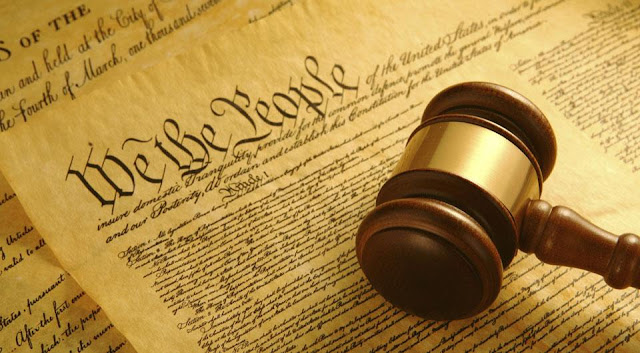The U.S. House of Representatives what is a Representative?
We, the People of the United States…
The U.S. House of Representatives makes and passes federal laws per the Constitution. The House is one of Congress's two chambers (the other is the U.S. Senate) and part of the federal government's legislative branch. The number of voting representatives in the House is fixed by law at no more than 435, proportionally representing the population of the 50 states.
What is a Representative?
Also referred to as a congressman or congresswoman, each representative is elected to serve the people of a specific congressional district for a two-year term. Representatives introduce bills and resolutions, offer amendments, and act on committees. The number of representatives with full voting rights is 435, set by Public Law 62-5 on August 8, 1911, and in effect since 1913. The number of representatives per state is proportionate to the population.
Article 1, Section 2 of the Constitution provides the minimum and maximum sizes for the House of Representatives. Currently, there are five delegates representing the District of Columbia, the Virgin Islands, Guam, American Samoa, and the Commonwealth of the Northern Mariana Islands. A resident commissioner represents Puerto Rico. The delegates and resident commissioner possess the same powers as other members of the House, except that they may not vote when the House is meeting as the House of Representatives.
To be elected, a representative must be at least 25 years old, a United States citizen for at least seven years, and an inhabitant of the state he or she represents.
Did You Know?
After extensive debate, the framers of the Constitution agreed to create the House with representation based on population and the Senate with equal representation. This agreement was part of what is referred to as The Great Compromise.
House leadership includes the speaker, majority and minority leaders, assistant leaders, whips, and a party caucus or conference. The Speaker acts as leader of the House and combines several institutional and administrative roles. Majority and minority leaders represent their respective parties on the House floor. Whips assist leadership in managing their party's legislative program on the House floor. A party caucus or conference is the name given to a meeting of or organization of all party members in the House. During these meetings, party members discuss matters of concern.
The House's standing committees have different legislative jurisdictions. Each considers bills and issues and recommends measures for consideration by the House. Committees also have oversight responsibilities to monitor agencies, programs, and activities within their jurisdictions and, sometimes, in areas that cut across committee jurisdictions.
The Committee of the Whole House is a committee of the House on which all representatives serve and meet in the House Chamber to consider measures from the Union calendar.
The party leaders must decide the size and proportion of Republicans to Democrats of each committee before members are assigned to it. The total number of committee slots allotted to each party is approximately the same as the ratio between majority and minority party members in the full chamber.
The House will sometimes form a special or select committee for a short period and specific purpose, frequently an investigation.
Did You Know?
Each committee has a chair and a ranking member. The chair heads the full committee, and the ranking member leads the minority members.
Congress has created various temporary and permanent commissions to serve as advisory bodies for investigative or policy-related issues or to carry out administrative, interparliamentary, or commemorative tasks. Such commissions are typically created by either law or House resolution and may be composed of House members, private citizens, or a mix of both. In some cases, the commissions are entities of the House or Congress itself; in other cases, they are crafted as independent entities within the legislative branch.
Examples of commissions
Financial Crisis Inquiry Commission: a temporary, independent investigative body created by law and comprised of private citizens.
Commission on Security and Cooperation in Europe (also known as the Helsinki Commission): an independent U.S. government agency composed of nine members of the United States Senate, nine from the House of Representatives, and one member each from the Departments of State, Defense, and Commerce.
House Page Board: a permanent Congressional advisory group created by law and comprised of House members, Officers, and private citizens.
House Commissions
Whether working on Capitol Hill or in his / her congressional district, a representative's schedule is hectic. Often beginning early in the morning with topical briefings, most representatives move quickly among caucus and committee meetings and hearings. They vote on bills, speak with constituents and other groups, and review constituent mail, press clips, and reports. Work can continue into the evening with receptions or fundraising events.
Key Concept
Representatives carry out a broad scope of work to best represent their constituents.
Contact Your Representative
Share your thoughts with your representative. Use the Find Your Representative box in the banner of this site to identify your representative, then use the contact form to share your thoughts.
Did You Know?
Representatives' schedules are sometimes planned out in increments as short as five minutes.
House Rules
Rules of Conduct
The Committee on Ethics has jurisdiction over the rules and statutes governing the conduct of members, officers, and employees while performing their official duties.
Key Concept
The Rules Committee controls what bills go to the House Floor and the terms of debate.
Majority Rules
The Rules Committee's makeup has traditionally been weighted by the majority party. It has been in its current configuration of 9 majority and 4 minority members since the late 1970s.
Did You Know?
As the Constitution outlines, the House represents citizens based on district populations, while the Senate represents citizens on an equal-state basis. This agreement was part of The Great Compromise, which led to the Permanent Seat of Government Act establishing the nation's federal capital in Washington, DC. In 1789, the House assembled for the first time in New York. It moved to Philadelphia in 1790 and then to Washington, DC, in 1800.
Key Concept
Each member of the House represents a set number of constituents.
Did You Know?
The House of Representatives moved into the House wing on the south side of the Capitol in 1807, four years before the branch was fully completed.


